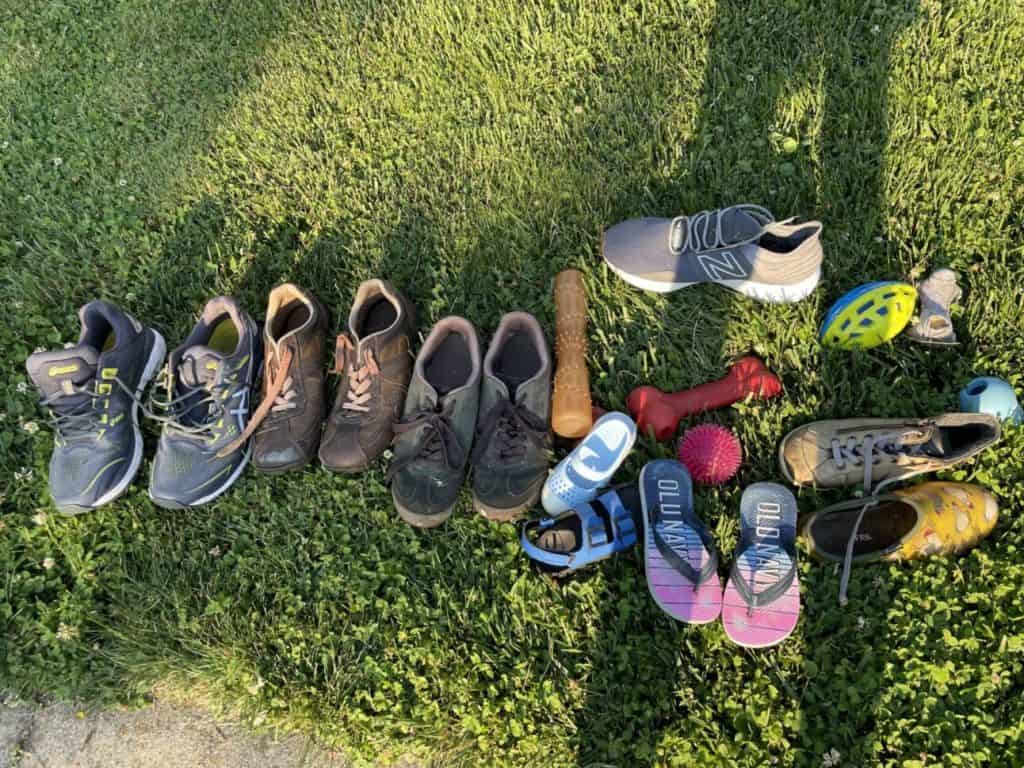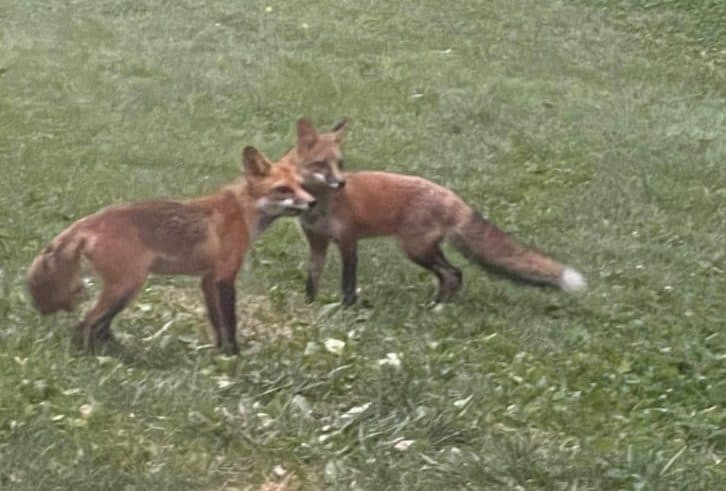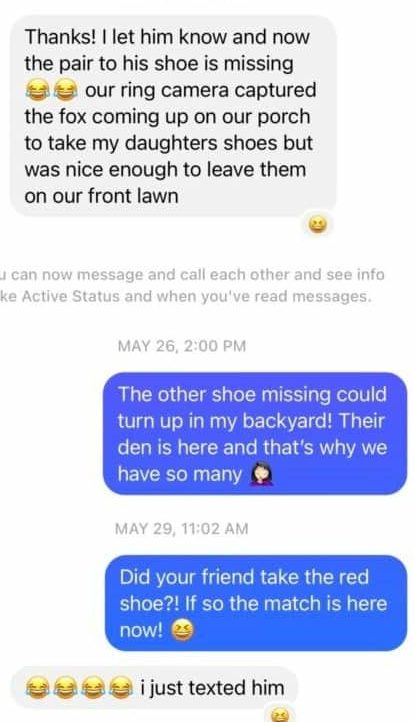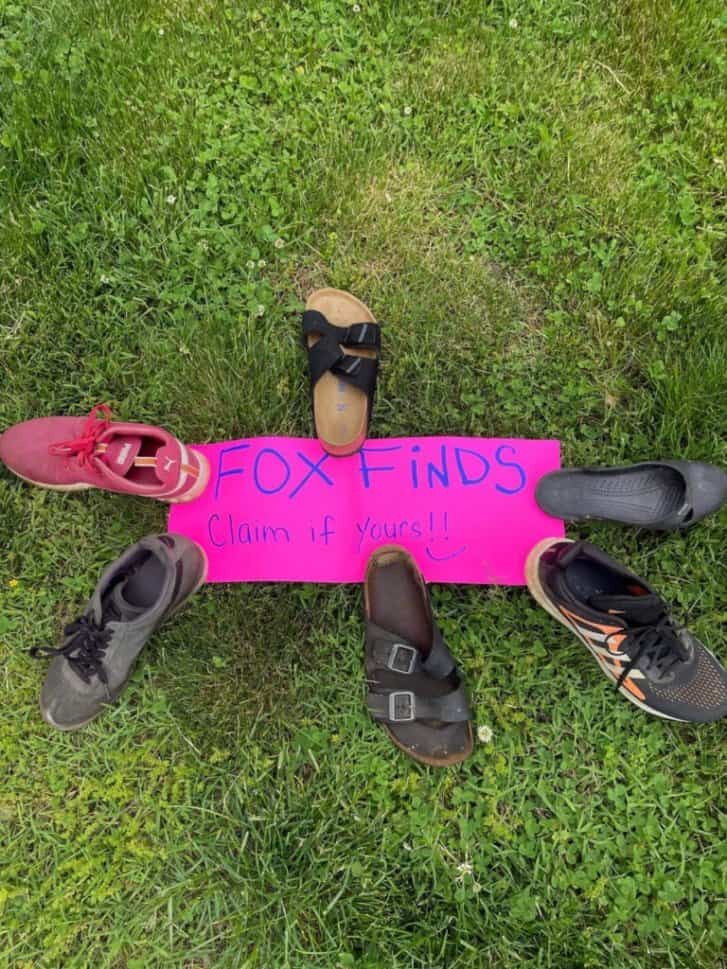the case of the missing shoes.
Amy Acq and her family live in Media, PA, in a well-established suburb just a few miles from Natural Lands’ Hildacy Preserve. This spring, she and her neighbors began noticing a seemingly random assortment of items were being deposited in their back yards overnight. A pair of gardening gloves. The daily newspaper. Dog toys that had been left in the yard. And shoes. Lots of shoes.
Sneakers, crocks, Birkenstocks, gardening togs, and flip flops. Sometimes just the left or the right. Sometimes the matched pair.

Photo: Amy Acq
At the same time, a few residents noticed an up-tick in fox activity in the neighborhood. Daytime sightings of pups romping and playing, as well as both day and night adventures caught on Ring cameras. They put two and two together when one person noticed a fox trotting through his camera footage with a flip flop in its mouth.
https://www.youtube.com/watch?v=sBQ5A7DRjRE
Apparently, foxes’ obsession with shoes has been well documented across the globe. Last year, NPR profiled a family from Downingtown, PA, who experienced the same mysterious shoe bonanza. Both male and female foxes will bring home items for their young to play with. As they get older, pups will bring their interesting finds back to the den as well.

Photo: Amy Acq
Through play, the young foxes learn important patterns of behavior. While playing with their siblings they practice how to catch and handle their prey. This enables the fox pup to become familiar with its own body as well as learning to live with its fellow foxes.
Says Amy Acq, “We actually reunited some sneakers with owners by posting on social media! The babies are now rambunctious teens, so now we’re also getting bigger prey like the remains of birds and skunks. Ewww. But overall we’re all quite humored by it.”

Photo: Amy Acq
It’s generally believed that the red fox (Vulpes vulpes) is not native to Pennsylvania, but naturalized hundreds of years ago. As Mariton Wildlife Sanctuary Manager Tim Burris shared in his interesting blog post about foxes, “This belief is based on the lack of any red fox remains in Native American villages before European settlement. The middens of these villages provide a window into common species available to Native Americans, so the lack of red fox bones is a pretty good indicator that they didn’t live here (although they may have been in other parts of North America). It is believed that the red fox that we see now came from European stock brought over for hunting by English landowners.”
They are a species that is extremely adaptable, as this story of the shoes illustrates. But while foxes may happily live among humans in developed areas, they are in the minority. Many species of insects, birds, and wildlife are in decline due to destruction of their native habitat. Which is one of the reasons Natural Lands will continue our work to save open space and steward the diverse habitats under our care.
